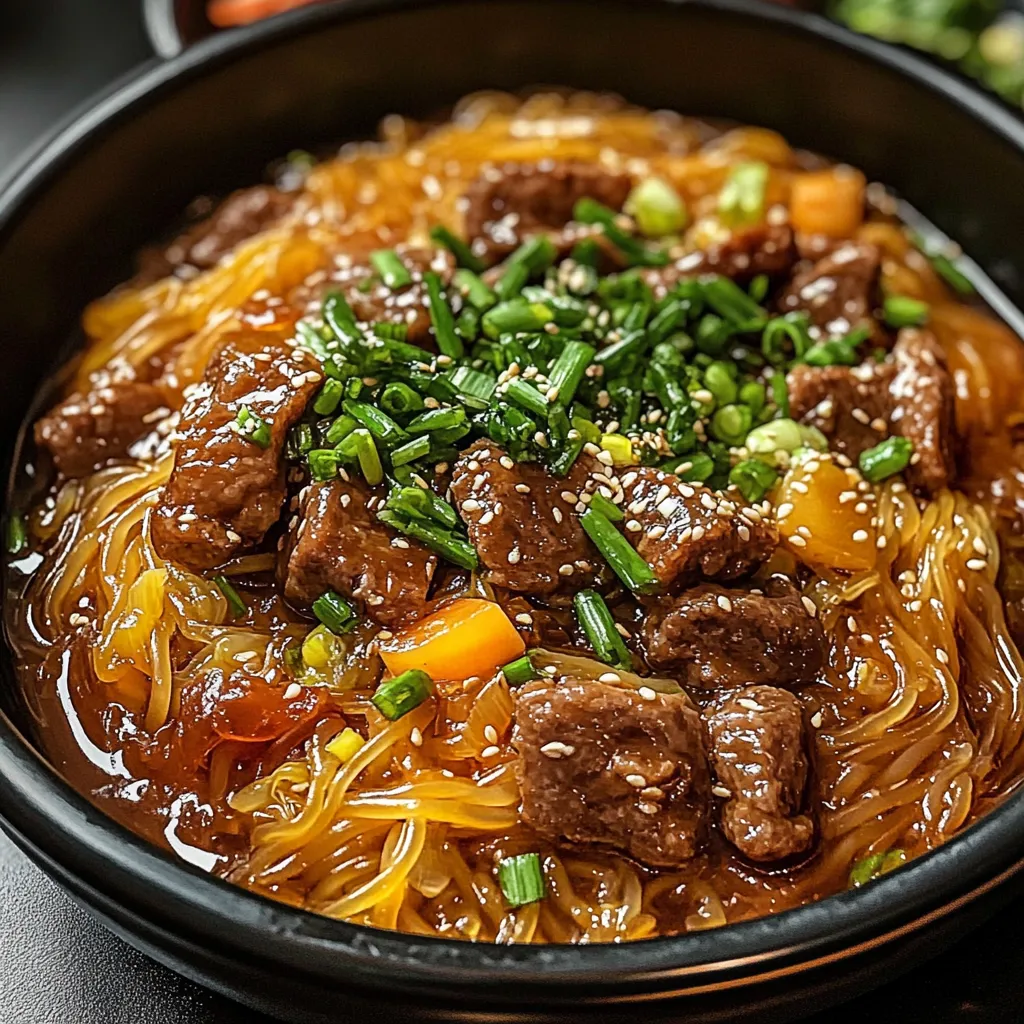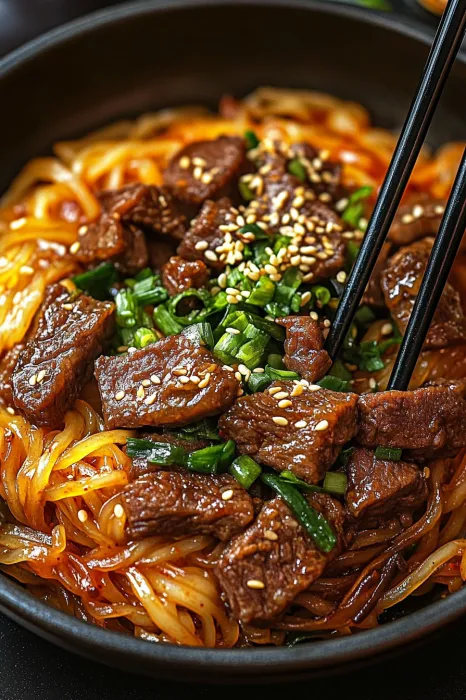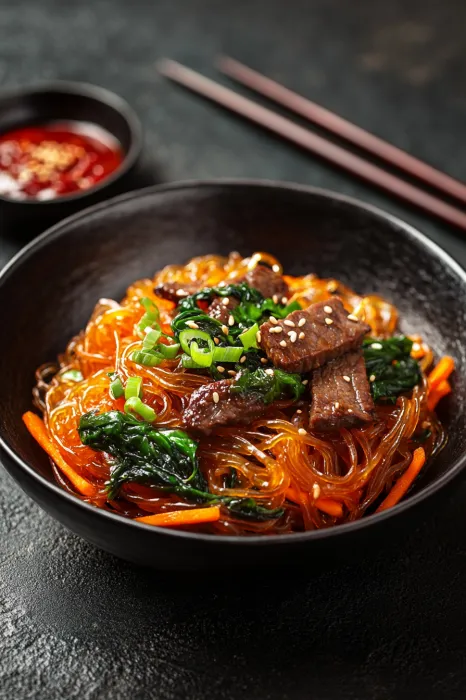 Pin it
Pin it
This vibrant Korean glass noodle stir-fry brings together chewy sweet potato noodles with tender beef, crisp vegetables, and a savory-sweet sauce that makes every bite memorable. The combination of textures and flavors creates a dish that's both comforting and impressive enough for special occasions.
I first made Japchae for a gathering with friends who had never tried Korean cuisine before, and it quickly became my most requested dish. The colorful presentation and satisfying textures make everyone reach for seconds.
Ingredients
- Sweet potato glass noodles: form the foundation of this dish with their uniquely chewy texture that absorbs the savory sauce beautifully
- Thin sliced beef: adds rich protein and pairs perfectly with the sweet and savory sauce
- Carrots and onions: provide natural sweetness and essential crunch
- Fresh spinach: brings color balance and nutritional value
- Sesame oil: creates that authentic Korean flavor profile you cannot substitute
- Soy sauce: delivers the umami that ties all ingredients together
- Brown sugar: balances the savory elements with subtle sweetness
- Green onions: add freshness and a pop of color as both ingredient and garnish
Step-by-Step Instructions
- Prepare the Noodles:
- Bring a large pot of water to a rolling boil and add a small drizzle of olive oil to prevent sticking. Add the sweet potato noodles and cook for exactly 5 to 6 minutes until they become translucent and chewy but still retain some bounce. Immediately drain and rinse under cold water to stop the cooking process and prevent clumping.
- Cook the Protein:
- Heat a skillet over high heat until very hot. Add the thinly sliced beef and cook quickly, stirring constantly until the meat changes color and begins to brown around the edges. While cooking, season with half of the soy sauce, sesame oil, and brown sugar mixture. This caramelizes slightly on the meat, creating deep flavor. Remove from heat once cooked through but still tender, about 3 to 4 minutes.
- Sauté the Vegetables:
- In a separate large skillet, heat the olive oil over medium high heat. Add the julienned carrots and cook for about 2 minutes before adding the sliced onions. Continue cooking until vegetables begin to soften but still maintain some crispness. Pour in the remaining soy sauce, sesame oil, and brown sugar mixture. Add the minced garlic and half of the green onions, stirring constantly for another minute to release their aromatics without burning.
- Combine Everything:
- Add the fresh spinach to the vegetable mixture and stir just until the leaves begin to wilt. In a large mixing bowl, combine the cooked noodles, seasoned beef, and vegetable mixture. Using tongs or chopsticks, lift and toss all ingredients together thoroughly to ensure even distribution of the sauce and components. The residual heat will continue cooking everything together perfectly.
 Pin it
Pin it
My favorite part of making Japchae is watching how the noodles transform from hard white sticks to glossy, translucent strands that absorb all the wonderful flavors. My Korean friend taught me that properly seasoned Japchae should have that perfect balance of sweet and savory where neither overpowers the other.
Authentic Korean Cooking Tips
Traditional Korean Japchae preparation involves cooking each ingredient separately to maintain distinct textures and flavors. While this recipe simplifies the process, you can follow this traditional method for even more authentic results. Cook each vegetable individually, season lightly with soy sauce and sesame oil, then combine everything at the end.
Storage and Reheating
Japchae stores beautifully in the refrigerator for up to 4 days in an airtight container. The flavors actually continue to develop overnight, making it taste even better the next day. To reheat, simply microwave gently or stir-fry quickly in a hot pan with a touch of sesame oil to refresh the flavors and textures.
Perfect Pairings
This versatile dish works beautifully as a main course but also makes an excellent side dish alongside Korean barbecue or within a larger Asian-inspired spread. For a complete Korean meal, serve with kimchi, a simple soup, and steamed rice. The sweet and savory profile of Japchae also pairs wonderfully with crisp, cold beer or traditional Korean rice wine.
 Pin it
Pin it
Frequently Asked Questions
- → What are sweet potato glass noodles?
Sweet potato glass noodles are translucent, chewy noodles made from sweet potato starch, commonly used in Korean cooking.
- → Can I substitute the beef in Japchae?
Yes, you can replace beef with chicken, tofu, shrimp, or even omit it for a vegetarian version.
- → How do I prevent noodles from clumping?
After cooking the noodles, rinse them under cold water and toss lightly with sesame oil to keep them from sticking.
- → Can I make Japchae gluten-free?
Yes, use tamari instead of soy sauce to make Japchae gluten-free.
- → What vegetables work well in Japchae?
Common vegetables include carrots, onions, spinach, and green onions. You can also add bell peppers or mushrooms.
